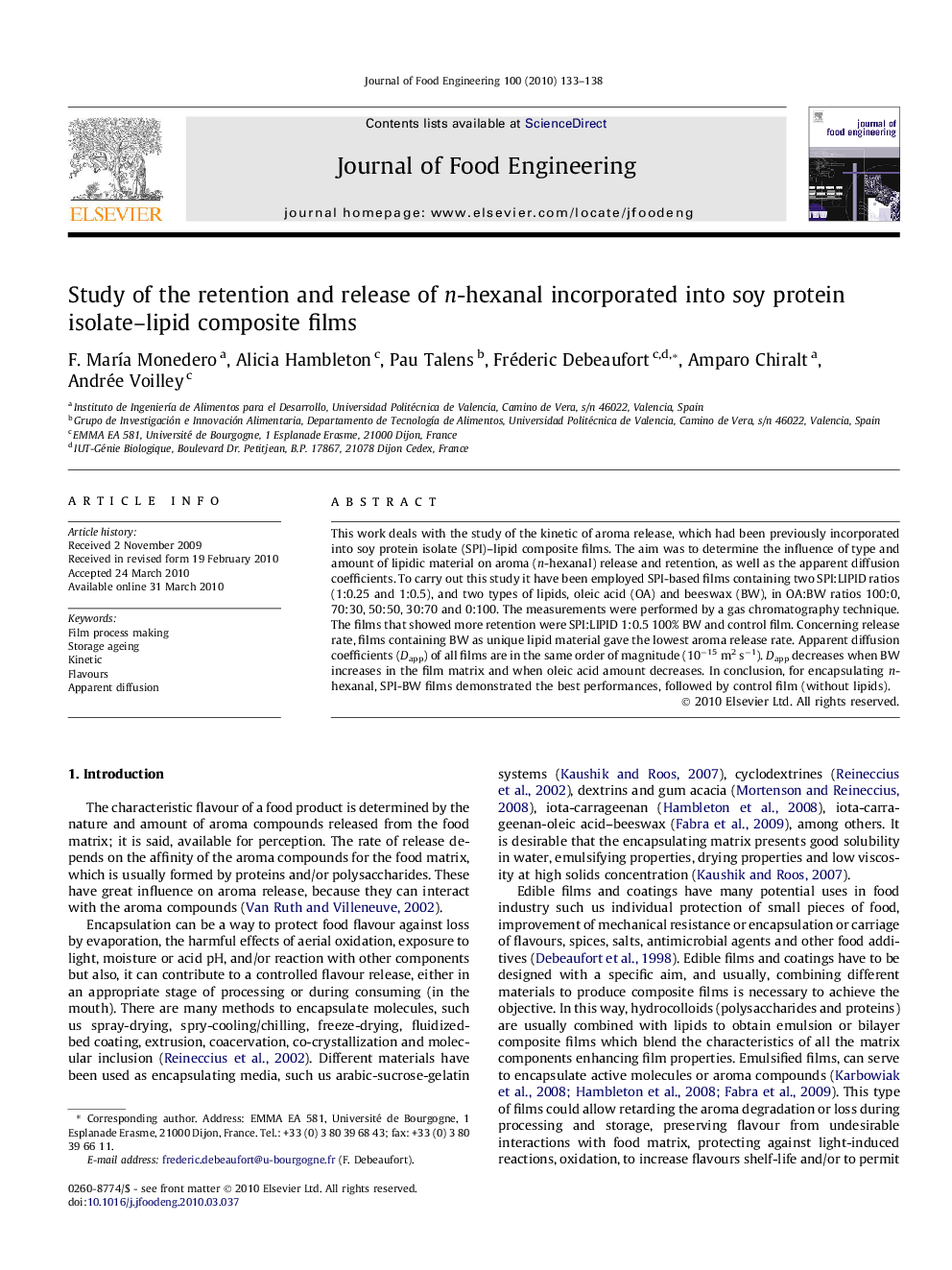| Article ID | Journal | Published Year | Pages | File Type |
|---|---|---|---|---|
| 224300 | Journal of Food Engineering | 2010 | 6 Pages |
This work deals with the study of the kinetic of aroma release, which had been previously incorporated into soy protein isolate (SPI)–lipid composite films. The aim was to determine the influence of type and amount of lipidic material on aroma (n-hexanal) release and retention, as well as the apparent diffusion coefficients. To carry out this study it have been employed SPI-based films containing two SPI:LIPID ratios (1:0.25 and 1:0.5), and two types of lipids, oleic acid (OA) and beeswax (BW), in OA:BW ratios 100:0, 70:30, 50:50, 30:70 and 0:100. The measurements were performed by a gas chromatography technique. The films that showed more retention were SPI:LIPID 1:0.5 100% BW and control film. Concerning release rate, films containing BW as unique lipid material gave the lowest aroma release rate. Apparent diffusion coefficients (Dapp) of all films are in the same order of magnitude (10−15 m2 s−1). Dapp decreases when BW increases in the film matrix and when oleic acid amount decreases. In conclusion, for encapsulating n-hexanal, SPI-BW films demonstrated the best performances, followed by control film (without lipids).
